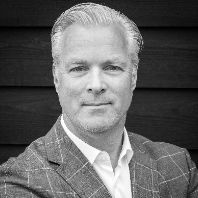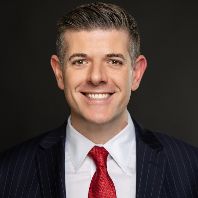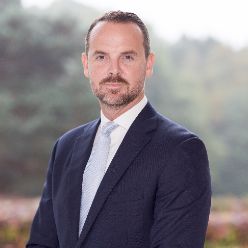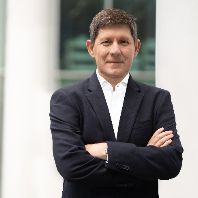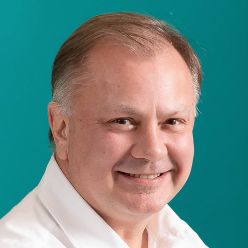Ben van Berkel studied architecture at the Rietveld Academy in Amsterdam and at the Architectural Association in London, receiving the AA Diploma with Honours in 1987. In 1988 he and Caroline Bos set up the Van Berkel & Bos Architectuurbureau in Amsterdam. In 1998 they established a new firm: UNStudio (United Net). Ben van Berkel has lectured and taught at many architectural schools around the world such as Princeton University and Columbia University. Currently he is Professor of Conceptual Design at the Staedelschule in Frankfurt am Main. I caught up with VanBerkel at MIPIM in Cannes to discover his unique insights into the world of architecture.
What first drew you to the field of architecture?
Strangely enough it was graphic design. I started out as a graphic designer making magazine covers. I was always interested in producing something that could be connected to the public, which the magazine covers provided, but at the same time magazines are only there for a week and I never liked the idea that something was so fluid, so impermanent. Architecture is something that always interested me. The man I worked for was a Japanese designer and he advised me to go to Japan. Once I saw the Katsura Palace in Kyoto I decided almost on the spot that I wanted to become an architect.
What would you say is your greatest achievement to date?
That’s tricky. It’s like asking me, ‘Who’s your favorite architect?’ I don’t have a particular hero; I have always been interested in certain aspects, in certain qualities of work other architects develop and that’s the same with my own work. If you ask me what is so interesting about the Erasmus Bridge we designed for Rotterdam, it’s not particularly the bridge itself but how it connects itself to the history of the city etc. It’s the same with all of the work we’ve done; I admire all our projects, but certain aspects a little bit more than others. If you don’t communicate with your work people don’t react or visit it. I very much believe in the dialogue you create between the architecture and the human experience of the building.
What can you tell us about the ZVE Fraunhofer Institute in Stuttgart?
That is a very important project for us, a wonderful building. It deals with the idea of how we will work in the future and it is a highly experimental office building in this sense. Here we worked with what we like to call not only sustainability in architecture but also human sustainability, meaning how would we network in the future with one another, how would we work in office spaces where we can change the conditions every day if we like so we can work in an environment where we feel comfortable. This is the kind of idea I also want to bring to homes. We all have this idea of escapism, retreating to a holiday home, but why can’t we bring that holiday house home with us? The same applies to work. With the Fraunhofer Institute there was a lot of research done on human behavior at work. It’s going to be a very special building.
What was your most challenging project?
The Mercedes-Benz showroom and museum was definitely one of the most challenging projects we’ve done. When we won the competition we had only two and half years to design the project and also build it. We had a good budget but the client was very tough on us. We won the competition in a good time but we started building it in a very difficult time, so we were not allowed to go even a penny over the budget. And here I had designed a quite experimental new type of building with a double helix spiral etc. and we had to deliver oin time so this was really an incredible achievement. This supports one of my philosophies that sometimes certain restraints are good for creativity. With Mercedes-Benz we invented new design techniques and production techniques to get the project finished in line with the client's timeframe. Mercedes is not just a showroom but a museum. They were very smart because they knew it wouldn’t attract enough people if it was only a showroom, and now everyone comes. The same is true with shopping centers, like the Star Place project we designed in Kaohsiung Taiwan. This is not only a really beautiful building; it also shows that it’s not just a shopping center but a project for the city. We made something public rather than just doing a commercial building. Don’t make it just a shopping center; this is my approach.
How does the location of a project influence your design?
It’s strange but I don’t usually like to go to the location in the very beginning of the project, depending on what the project is. Instead I look at the photographs and read about it, and I try to imagine what the location is like. This gives me a little more freedom. You can give yourself certain restraints if you go to the location in the first instance. I do the first sketches and then I go to the location and see if they match. And if they don’t match then I do other sketches, but I always try to build in a kind of tension between what I have in my imagination about a location and what the real location actually does to my experience of architecture. And I honestly admit I have to correct myself quite often when I do visit the location.
How important is sustainability in today’s designs?
It’s very important. There is a new form of awareness is in the air right now and you feel the interest. It’s high on people’s agenda and there is money for it, even in today’s climate. Sustainability is a kind of fashionable word right now that everyone is using. But we like to think of it in a very inclusive manner. For us a green roof and green façade is not a solution. We believe in a comprehensive and intelligent solution: energy saving, the right materials, the way you use your water; basically, to use everything you have in your building to produce what it needs to operate intelligently and inclusively within the concept of the design. Sustainability needs to be more conceptually and inclusively integrated. The most important aspect may be to think about human sustainability. In hospital technology, for example, the air is not simply circulated throughout the building. Everyone always gets fresh air into their rooms, and we are going to use this technique in office buildings to address the complaints we always hear of colds and infections in offices.
What are your goals for the future?
One of my goals is to make more intelligent architecture, designs that are more responsible not only for the environment but also towards human behavior. And of course a lot of other things go along with this. Like how do you organize new techniques for designing in a sustainable way, and how do you build with this new consciousness? New materials are important to be aware of, new construction techniques, new production techniques, so you need to talk with the whole industry to make this instrumental; you need years to get this on the road. I think that architecture in the future will live a little more and be reactive to people.

